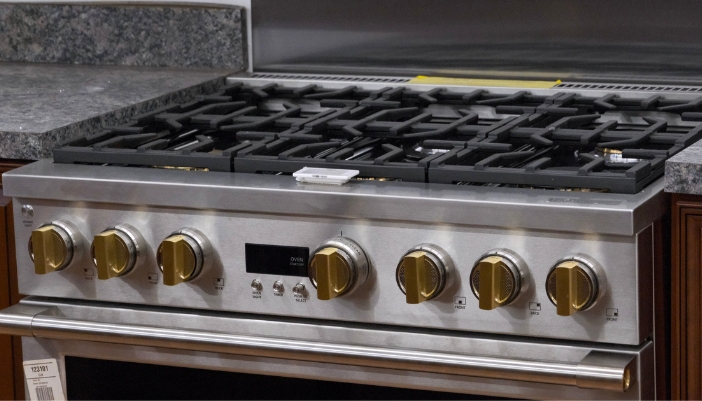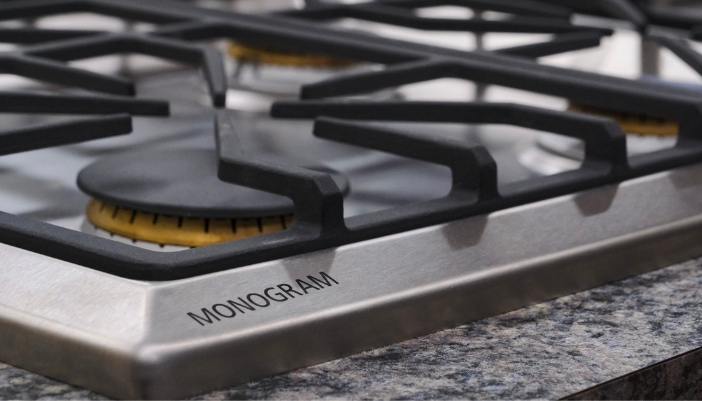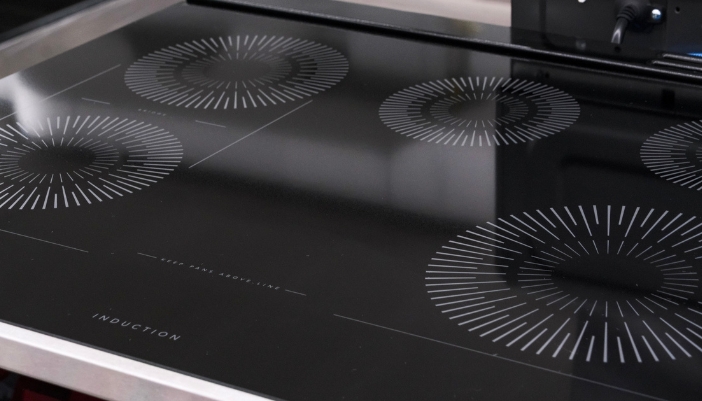
Your stove is the heart of your kitchen – it’s where meals come together, family recipes are passed down, and your creativity comes alive. But anyone who cooks regularly knows it’s also one of the messiest spots in the house. Spills, burnt-on food, and splatters seem to appear after every meal, and if left unchecked, the mess quickly hardens into stubborn stains that make cleaning feel even more like a chore. If you find yourself overwhelmed by the thought of cleaning your stovetop, then this is for you! Here are a few simple habits and cleaning tips so you can maintain that brand-new cooktop look without the harsh chemicals and hours of scrubbing:
1. Wipe Down Your Unit Daily
A little bit of daily effort prevents larger problems later, and it’s important to have this mindset when it comes to your stovetop, too! After each cooking session, take a moment to wipe down the surface with a damp cloth or paper towel; either of these should be able to handle fresh spills and surface stains. Tackling these messes right after cooking prevents them from turning into baked-on grime. It’s a small, simple step that will not only keep your stovetop presentable, but you’ll also save yourself the chore of tough cleaning down the line.
2. Remove Burners and Grates
If you own a gas stovetop, you know just how important it is to keep your burners and grates looking and working their best. To ensure a clean stovetop, you want to make sure you’re removing these and giving them some attention, too! You can clean your burners and grates by soaking them in warm, soapy water. I typically let them soak while I’m dealing with the mess on the cooktop itself, allowing enough time for the grease and food residue to loosen on the grates. Once they’ve spent enough time soaking, gently clean them with a sponge or brush – just make sure they’ve dried thoroughly before reinstalling!

3. Use Gentle Cleaning Agents
With stubborn stains, it can be tempting to reach for the strongest cleaning product you have. In reality, those harsh chemicals can damage the finish on your stovetop, leading to scuff marks or dulling the shine. Instead, opt for a gentler cleaner. A few drops of dish soap in warm water is often enough to tackle the messes on your stovetop. If you need something with a little more power, vinegar and baking soda are great natural stovetop cleaners.
4. Degrease With Vinegar
One of your cooktop’s worst enemies is grease – it’s almost invisible and can sneakily build up over time. Before you know it, you’re dealing with this film that seems impossible to remove. Don’t worry, though! A favorite homemade stovetop cleaner of mine is a mix of equal parts vinegar and water. I like to add this mixture into a spray bottle and spritz it on any grease. Let the solution sit for a few minutes to break down the oils, and then use a soft cloth or paper towel to wipe it up without the hassle. No headache involved!
5. Treat Stubborn Stains with Baking Soda
Removing burnt food from your stovetop is one of those messes that can’t be solved with warm water and a gentle wipe. Baking soda is going to be your best friend if you want to avoid those harsh chemicals. All you have to do is mix a few spoonfuls of baking soda with water to form a paste, then gently scrub it over the mess with a sponge. Baking soda is a little bit abrasive, and it helps lift the burnt-on mess without scratching your stovetop surface. If it is a particularly stubborn stain, it may require a few passes or for the paste to sit for a few moments to help loosen it.
6. Opt for Soft Sponges
Don’t use abrasive scrubbers like steel wool. While they might help lift baked-on food and sticky grease, they could damage your cooktop (especially if it’s stainless steel or glass). The scratches left behind not only ruin the look of your stovetop, but they can also trap dirt and grime. A soft sponge or microfiber cloth is ideal for scrubbing away stains, without scratching your stovetop.

7. Remove the Control Knobs
The control knobs are often overlooked when it comes to keeping your stovetop clean, but don’t skip out on them! They collect a surprising amount of grease and food splatters. Most of the time, the stovetop control knobs can be removed with a gentle pull. Once removed, I typically like to soak them in warm, soapy water before gently scrubbing them with a microfiber cloth. While they’re soaking, I make sure to wipe down the area directly underneath them. Once dry, they just pop right back into place. This small step makes a huge difference in the appearance of your stovetop, so don’t neglect it!
8. Dry Thoroughly
After cleaning your stovetop, make sure to take the time to thoroughly dry it off. It might sound silly, but without proper drying, water spots and streaks can ruin the hard work you put into making your stovetop shine. Use a clean, dry cloth to wipe down the surfaces – burners, grates, and knobs included. This step not only prevents irritating streaks, but it also reduces the risk of rust on any metal parts.
9. Polish
While not necessary, you should consider polishing your stovetop to give it a little bit of extra sparkle and shine. There are specialized stovetop cleaners or stainless-steel cleaners that can help restore that just-like-new look. This is a small step that makes a big difference, leaving your kitchen centerpiece gleaming and inviting.
Keeping your stovetop clean doesn’t need to be complicated or expensive. By soaking grates and burners, choosing safe cleaners, paying attention to details like knobs and drying, and incorporating a quick wipe down after use, it will help maintain a spotless stovetop with minimal effort. A clean stovetop isn’t just about appearances; it makes cooking more enjoyable, reduces the risk of lingering odors, and helps your appliance last longer. Next time you finish preparing a meal, take a moment to give your stovetop a little TLC.
